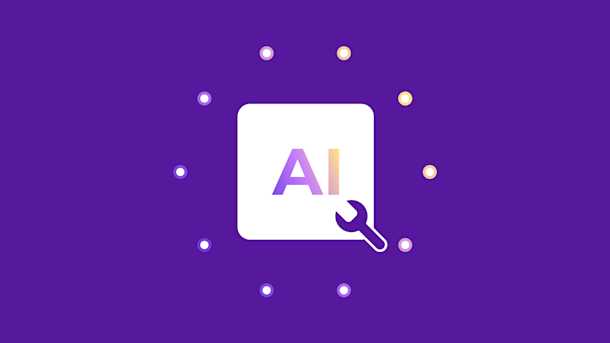In today’s globalized world, the internet connects customers and brands from every country, timezone, and language imaginable. To drive growth in this interconnected marketplace, you need the right localization and translation management tools to more effectively reach your customers.
By removing language barriers and providing authentic localized content, you can connect with your target audience more personally and therefore increase your company’s growth.
Communicating in English is a huge advantage, considering 1,456 million people spoke the language in 2023—but that’s out of more than 8.1 billion people worldwide%20of%20the%20world.). You’ll reach only a small slice of the pie with English content alone.
AI translation tools can help you create multilingual experiences quickly and efficiently, allowing you to enter new markets faster than ever before. You no longer have to spend countless hours, months, or even years tediously translating your brand message, website, and materials by hand. Instead, you can adopt powerful language tools for faster, more accurate translations.
The AI translation landscape has evolved rapidly, especially for business localization. As AI translation tools become more sophisticated, consumers and businesses alike are seeing the value of machine learning (ML) and increased productivity.
But which tools should you leverage to grow your business? Let’s explore some of the top AI translation technologies that are transforming the way companies expand globally.
AI’s role in modern business translation
As businesses strive to expand across the globe, AI translation tools have become indispensable. These tools are reshaping how companies approach language barriers by offering solutions that are not only efficient but also increasingly scaleable.
Let’s explore how AI is transforming business translation:
Translation advancements
Using AI translation tools started as a straightforward, calculated experience that would yield a literal translation of your input. But the results would sometimes be slightly inaccurate based on grammar or context.
Now, AI and ML have created more accurate outputs. Consider popular modern machine translation models like neural machine translation (NMT). These engines use neural networks to determine the best way to translate your content by interpreting the source content’s intent.
Innovative brands are using the following AI-powered tools to boost efficiency in their translation processes:
- Machine translation: Platforms that automatically translate content using NMT technology, which allows for faster publication
- Natural language processing (NLP): Tools that convert human language into a computer’s binary language and scan and analyze documents to uncover potential errors or improvements
- Process automation: Systems that handle basic and repetitive tasks, such as assigning jobs, reviewing and revising content, or submitting and rejecting content
Synergy with human expertise in business translation
Today’s innovative technologies allow humans to work alongside AI throughout the translation process.
Localization professionals are no strangers to using technology to streamline their work. They use software to split text into manageable segments, apply previous translations, and run quality assurance checks. Because of this advantage, businesses can more easily scale and use quality estimation algorithms to provide higher-quality results.
It’s important to note that AI is not replacing human translators. Rather, AI tools support human linguists and make the translation process more efficient, allowing companies to publish content to new markets more quickly without sacrificing quality.
Accuracy and speed
A significant benefit of AI translation tools is the opportunity to reduce costs while saving valuable time. For example, with the ability to preconfigure job automation rules, users can keep content flowing through parameters and rely on automated quality checks to identify any issues within translations.
Leading translation platforms leverage linguistic and project data to improve their services and tools. AI also continuously optimizes users’ translation processes, allowing them to improve efficiency and learn how to enhance their workflows even further.
These AI-powered translation tools offer several necessary features:
- Best-in-class MT: Leverages advanced machine translation engines to translate billions of words in milliseconds, significantly speeding up the translation process
- Automated project management and dynamic workflows: Streamlines the translation process by automatically routing content based on pre-programmed parameters to reduce manual intervention and improve efficiency
- Quality checks, data, and analytics: Provides access to real-time translation quality metrics across different languages, projects, and providers, enabling data-driven decision-making and continuous improvement
- Large language models (LLMs) and automated post-editing: Uses deep learning technologies to create efficient translations, automate post-editing tasks, and enhance translated content’s overall quality and consistency
By leveraging these advanced AI translation tools, businesses can dramatically accelerate their global expansion efforts and ensure that they stay competitive in the international marketplace.
The top AI translation tools for business translation
In today’s fast-paced global market, you’ll need more than just basic translation capabilities to stay competitive. Modern innovative technology allows you to quickly translate your website, marketing materials, platform, and any other resource you need to communicate with customers worldwide.
That’s where AI translation tools come in—they provide cost-effective, efficient solutions that can propel your business growth like never before. But with so many options available, which tools should you choose?
Let’s look at some of the most powerful AI translation solutions to help your business scale its global presence:
1. Smartling
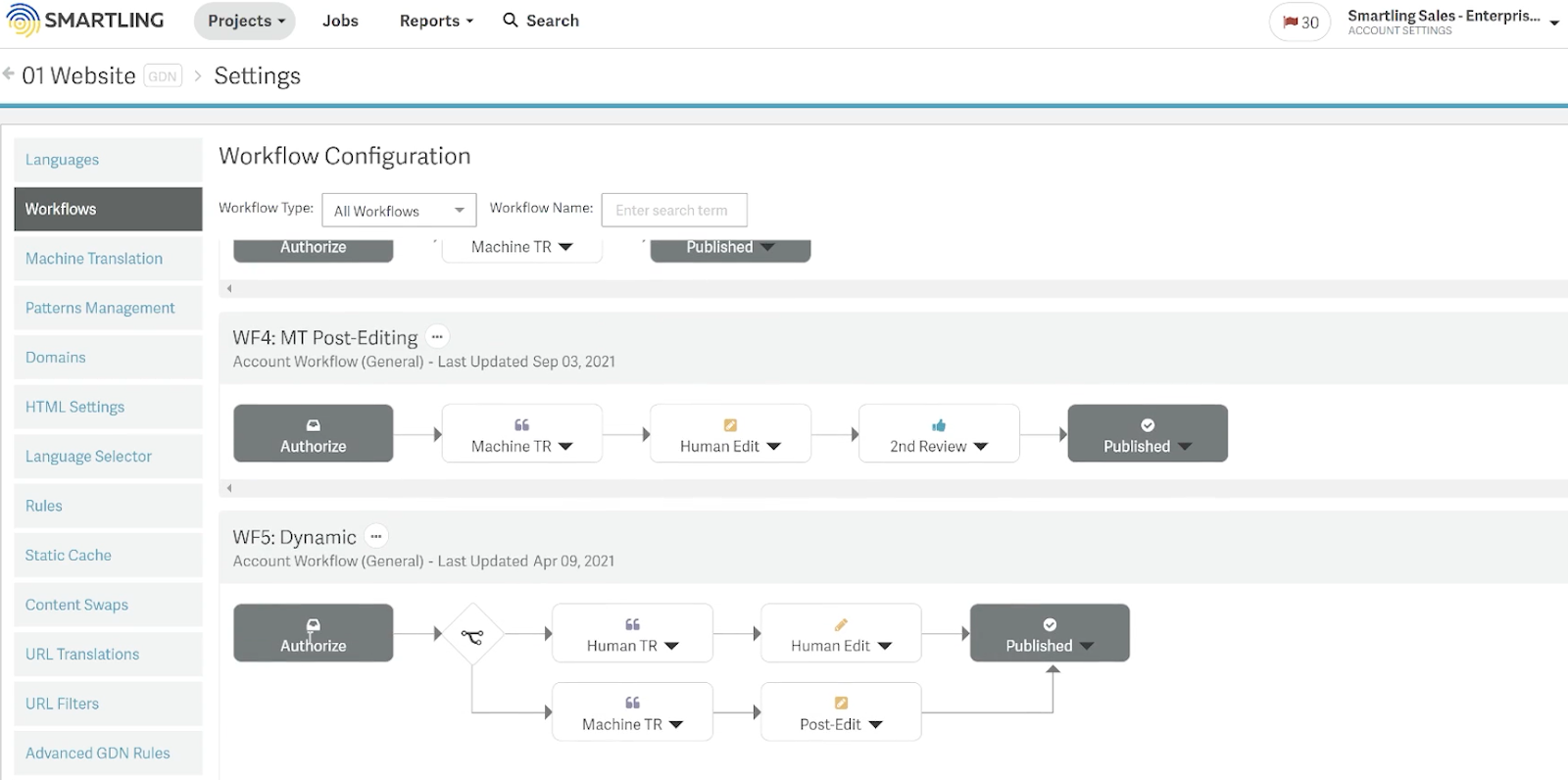
Smartling’s project management dashboard (Source: Smartling)
Smartling offers a comprehensive AI-powered translation solution that combines cutting-edge technology with human expertise. We streamline the localization process to help businesses expand globally with speed and precision.
Top features:
- AI-Powered Human Translation: Leverages LLMs, machine translation, and human linguists for high-quality translations
- AI Translation Toolkit: Provides various features and performance tracking
- MT Hub: Enables access to multiple machine translation engines
- Smartling Translate: Offers a GPT-enabled, self-serve translation portal for instant translations
- Computer-assisted translation tool: Offers visual context, real-time translation memory, automated routing, and pre-programmed quality checks
Pros:
- Reduces manual translation work by 90%
- Automates project management based on pre-programmed parameters
- Provides a real-time view of translation quality across all projects
Cons:
- Requires initial setup time to configure automated processes and workflows
- May require some training to understand all of Smartling’s capabilities
2. DeepL
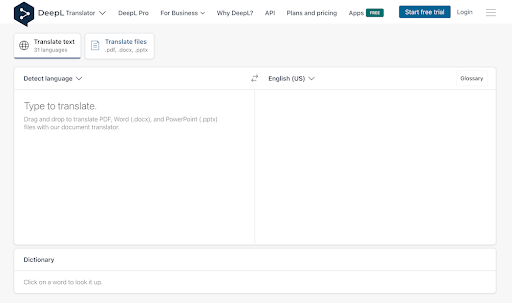
DeepL’s language translator (Source: DeepL)
DeepL is a great AI translation tool that offers a blend of accuracy and natural-sounding output. This tool leverages advanced neural networks to capture your content’s meaning and deliver translations that feel authentic across a variety of languages. DeepL also integrates with Smartling as one of its MT models.
Top features:
- MT: Translates across 31 languages using advanced algorithms
- Tone selection: Allows selection between formal and informal tones
- Format preservation: Preserves the original document’s layout and structure during translation
Pros:
- Delivers consistently high-quality translations that outperform other popular services in blind tests
- Provides cost-effective solutions that may increase your return on investment
- Offers seamless integrations with desktop, mobile apps, and browser extensions for easy access
Cons:
- Supports fewer languages than some alternatives
- Limits glossary support to seven language pairs, which reduces customization options
- Restricts free version to 5,000 characters per translation, which may not be sufficient for larger projects
- Offers limited integration options
3. Lokalise AI
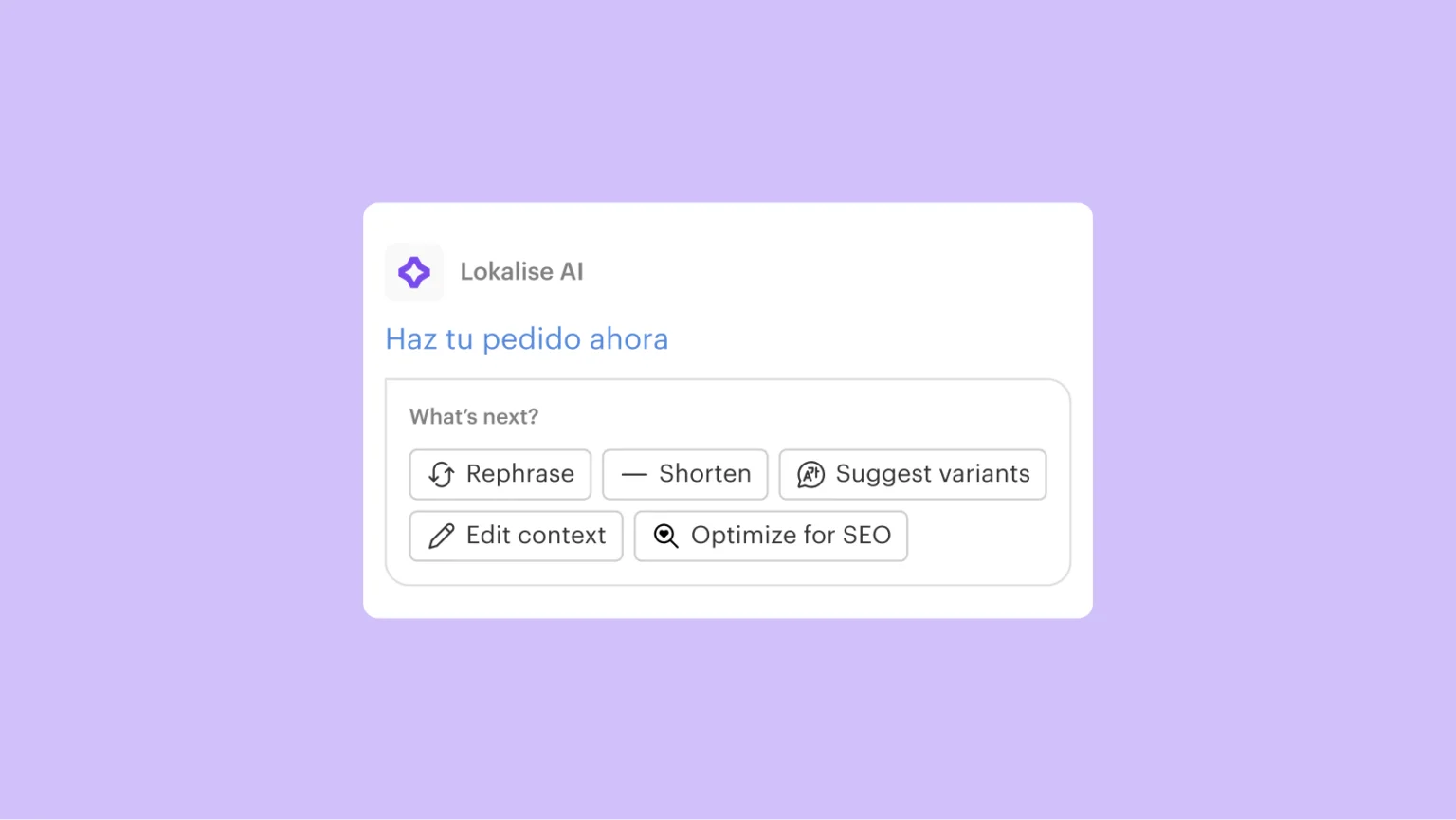
Lokalise AI’s translator (Source: Lokalise AI)
Lokalise AI offers businesses a robust platform to manage their localization needs. This tool combines advanced ML with a comprehensive translation management system, which enables companies to scale their global reach efficiently and accurately.
Top features:
- Bulk translation: Translates content in multiple languages simultaneously, which saves you time when streamlining your localization workflow
- Context customization: Allows you to add style guides, tone of voice, and glossaries to fine-tune translations for specific needs and industries
- Quality assurance: Generates quality assurance reports with pass/fail scores to identify critical errors
Pros:
- Offers one of the most accurate AI translations in the market
- Integrates seamlessly with over 55 popular tools, including Github, Figma, and various content management systems
- Provides one-click features for search engine optimization, as well as shortening and rephrasing content
Cons:
- Lokalise AI uses only one LLM: GPT by OpenAI.
- Some users report confusion with the admin section and user permissions (Source: G2)
- This tool doesn’t support all file formats and has context-based translation memory limitations.
- Users occasionally experience issues with permissions, particularly regarding language visibility. (Source: Capterra)
4. Google Translate
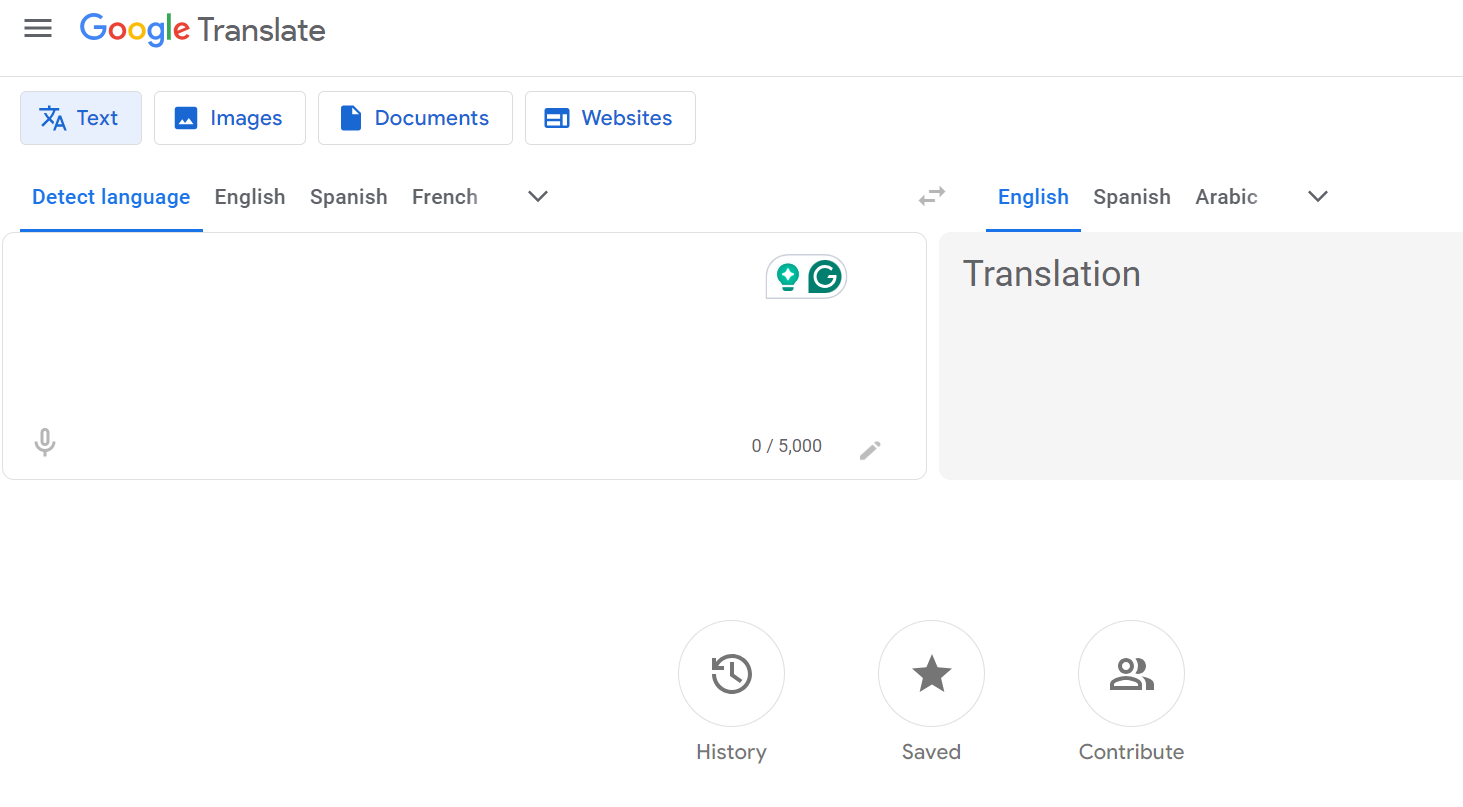
Google’s translator (Source: Google Translate)
Google Translate is a pioneer in the world of AI translation, offering a free, accessible solution for quick text translations. Since its launch in 2006, this tool has become a household name that uses Google’s robust AI capabilities to break down basic language barriers across the globe. Smartling integrates Google Translate as one of its MT options in its NMT Hub.
Top features:
- Multi-language support: Offers translations in over 130 languages, making it one of the most comprehensive tools available
- Versatile input methods: Translates text, voice, images, and even entire web pages, depending on users’ needs
- Offline mode: Allows basic translation functionality without an internet connection, which is ideal for travelers
Pros:
- Provides free, easily accessible service
- Offers a user-friendly interface for quick, on-the-go translations
- Supports real-time conversation translation and image-to-text translation
Cons:
- Accuracy can vary significantly, depending on language complexity and context.
- Google Translate lacks customization options for specific industry terms or brand voices.
- This tool doesn’t offer built-in integration capabilities with other business tools.
- Users have noted privacy concerns—Google doesn’t guarantee translated data security. (Source: G2)
- Google Translate struggles to accurately translate nuanced language, idioms, and cultural context.
- It lacks integrations for seamless workflows.
5. Microsoft Translator
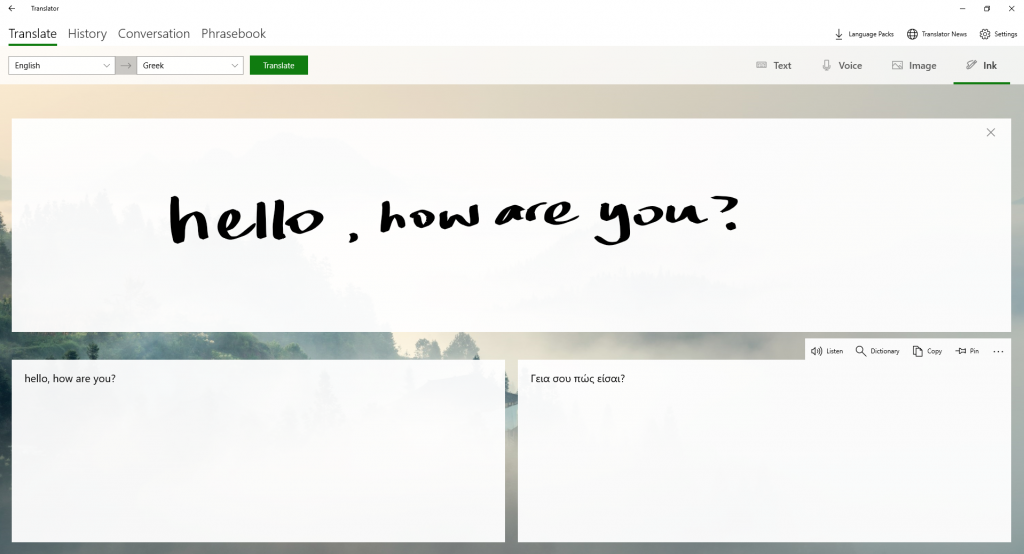
Microsoft’s translator for Windows (Source: Microsoft Translator)
Microsoft Translator offers a blend of accessibility and advanced features. This cloud-based NMT service caters to individual users and businesses alike, providing a versatile solution for global communication needs.
Top features:
- Multi-platform integration: Works across various devices and operating systems and integrates smoothly with other Microsoft products
- Custom translator: Allows users to create personalized neural translation systems using their translation history and specific terminology
- Live conversation translation: Enables real-time translation for spoken conversations to improve multilingual communication
Pros:
- Supports over 100 languages to instantly translate large volumes of text
- Offers both free and business versions with support for multiple document types
- Provides robust security measures, including on-premise solutions for highly sensitive projects
Cons:
- Microsoft Translator struggles with capturing contextual nuances and cultural sensitivities.
- Accuracy can be limited, especially for complex or less common languages.
- This tool relies heavily on Internet connectivity for full functionality.
- It requires paid subscriptions or access to other Microsoft services for more advanced features.
6. Taia
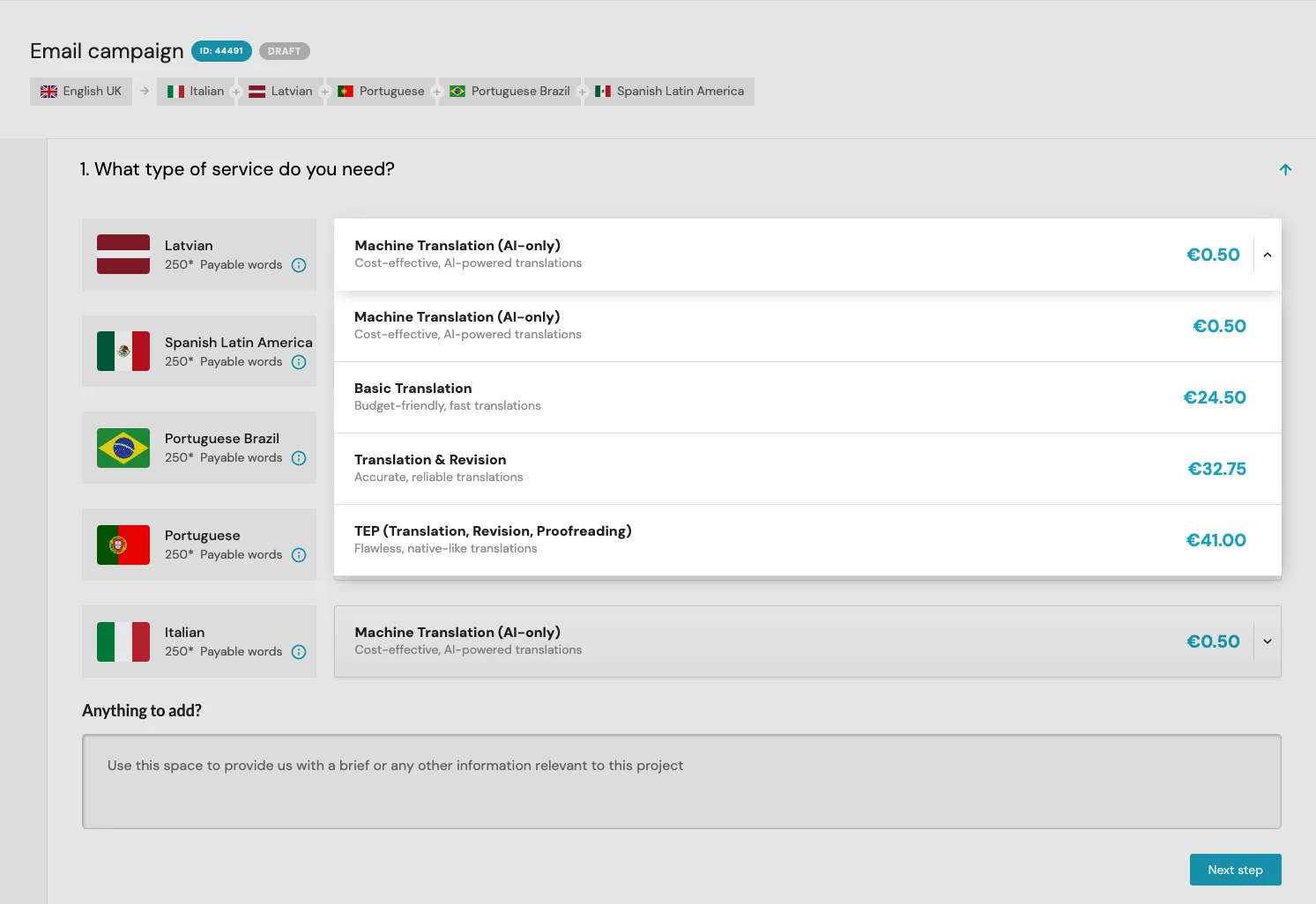
Taia’s translation dashboard (Source: Taia)
Taia combines AI’s efficiency with human translators’ expertise. It offers a flexible approach to translation that caters to various quality and budget needs.
Top features:
- Flexible translation options: Offers five types of translation services, ranging from AI-only to human-perfected translations, allowing users to balance quality and costs
- Wide format support: Accommodates over 70 file formats and 97 languages and preserves formatting and design during translation
- Project management tools: Provides a real-time progress overview and detailed cost breakdown for efficient project tracking
Pros:
- Offers instant rate estimates for up-front cost transparency
- Supports long-term project needs with consistent translation quality
- Provides application programming interface (API) integrations for automated translations in high-volume scenarios
Cons:
- Has slower turnaround times compared to some competitors
- Lacks integrations with other content management systems and repositories
- Doesn’t offer options to add glossaries or style guides to maintain brand consistency
7. ChatGPT
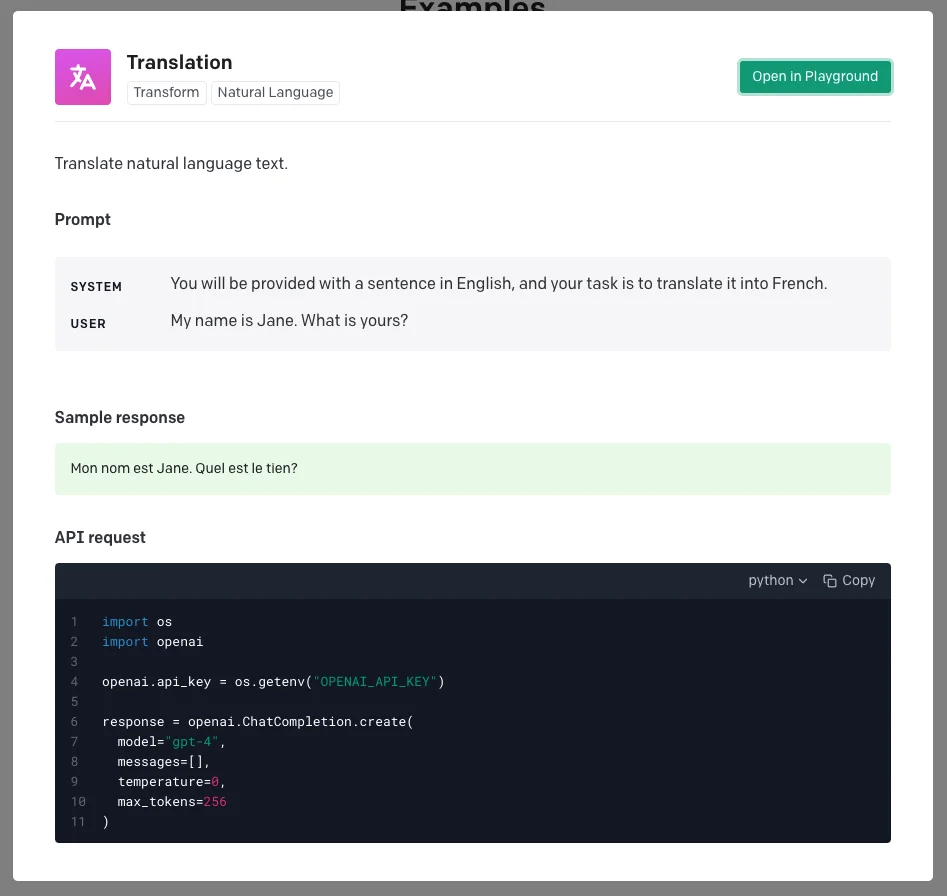
ChatGPT’s translation dashboard (Source: ChatGPT)
OpenAI’s ChatGPT has revolutionized the landscape of AI-powered language processing. Although OpenAI did not primarily design ChatGPT for translation, this versatile generative AI tool is a powerful ally for businesses that are looking to break down language barriers and expand their global reach.
While ChatGPT offers impressive capabilities, specialized translation tools often provide more robust and reliable solutions for business needs. For example, Smartling Translate, our GPT-enabled translation portal, delivers instant translations of text or documents. This tool combines the power of GPT technology with Smartling’s expertise in language AI and localization workflows, offering a more reliable solution for business translation needs.
Top features:
- Multi-language support: Translates content into over 50 languages
- Context-aware translations: Uses advanced NLP to maintain tone and style in translations
- Conversational interface: Offers a user-friendly, chat-based interface for quick, intuitive translations
Pros:
- Can refine and customize translations through prompts
- Handles various content types, from casual conversations to professional documents
- Delivers cost-efficient translation solutions
- Produces highly fluent translations in certain language pairs
Cons:
- Lacks built-in features like glossaries or style guides for maintaining brand consistency
- May produce model hallucinations, leading to inaccurate translations
- Lacks consistency in factual accuracy across translations
- Requires careful prompting for optimal results
8. Amazon Translate
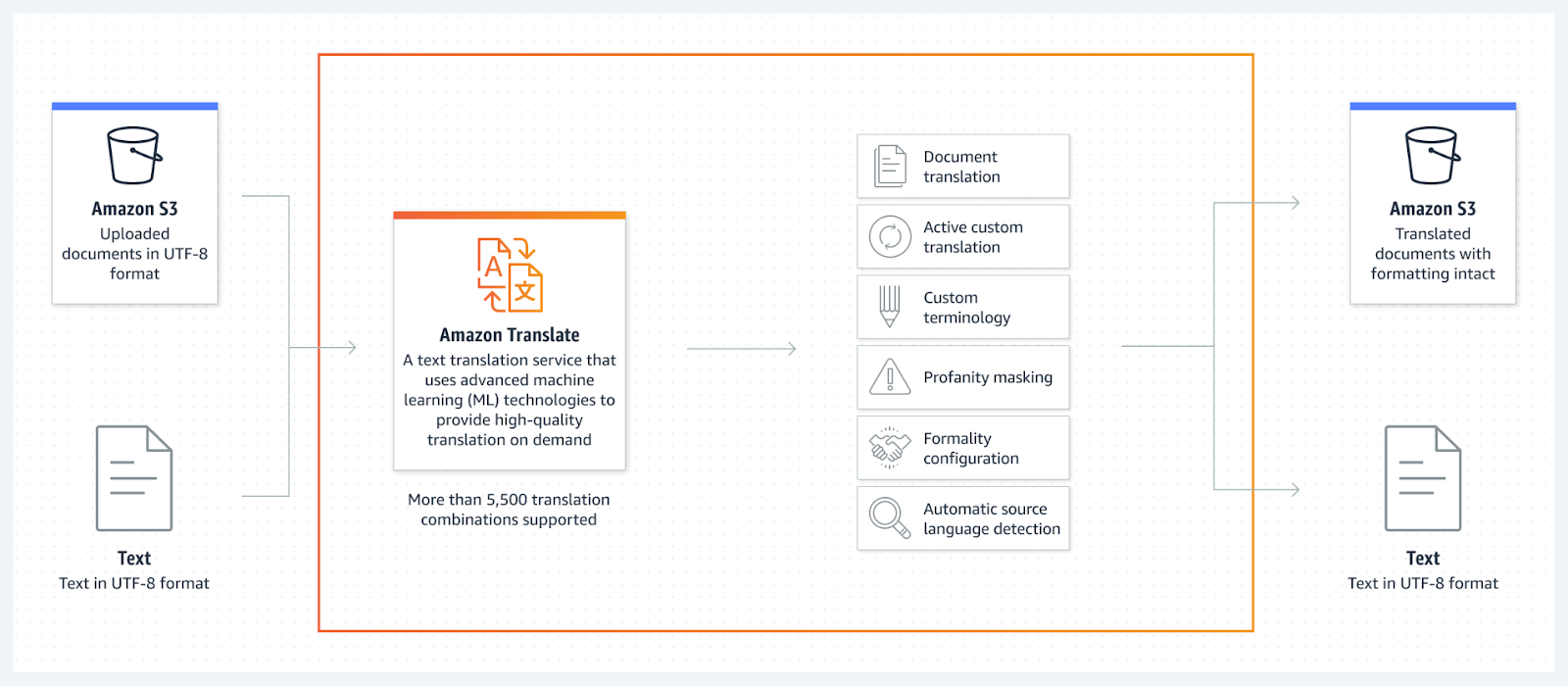
Amazon Translate’s workflow (Source: Amazon Translate)
Amazon Web Services developed this cloud-based service, which leverages advanced ML algorithms to deliver fast, accurate translations across a wide range of languages and content types.
Top features:
- Batch translation: Processes large volumes of content with a single API to streamline translation workflows
- Customization options: Enables teams to fine-tune machine translations to align with specific brand voices and industry terms
- Real-time capabilities: Supports instant translation for live communication tools like chat, email, and ticketing systems
Pros:
- Supports over 75 languages
- Integrates seamlessly with Amazon Web Services
- Offers a free plan for the first 12 months
Cons:
- Requires technical expertise to set up and integrate effectively
- Struggles with highly nuanced or context-dependent content
- Lacks some specialized features found in dedicated translation management systems
How Smartling’s LanguageAI enhances business translation
Today, harnessing the power of AI translation is no longer a luxury—it’s a necessity for businesses that aim to expand their reach and connect with audiences worldwide. While the tools we’ve explored each have their strengths, Smartling is overall a more comprehensive solution that combines the best of AI technology with human expertise. We bring together cutting-edge technology and linguistic prowess to deliver consistent, high-quality brand translations.
By choosing Smartling, you’re not just adopting a translation tool—you’re also embracing a partner that can help you navigate global markets’ complexities with confidence. Whether you’re looking to translate your website, marketing materials, or customer support content, we offer the technology and expertise you need to ensure that your message resonates with audiences around the world.
Ready to revolutionize your approach to global communication and drive business growth? Book a meeting with Smartling today to discover how our AI-powered translation solutions can help you break down language barriers and connect with customers on a global scale.
